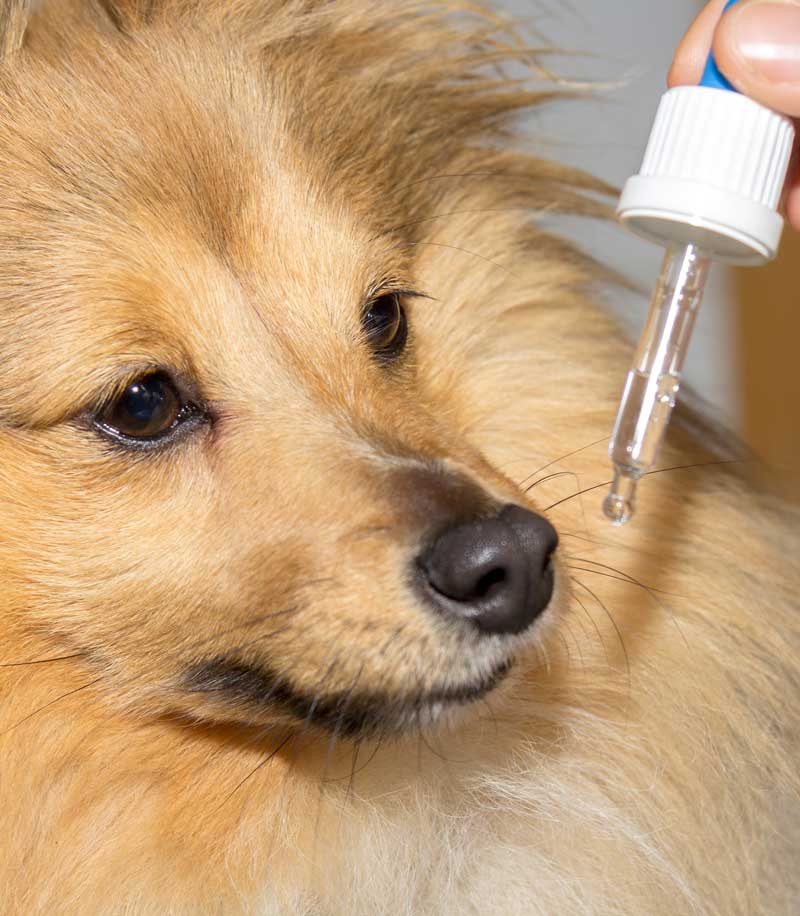Our dogs often have a calming influence on us, but our canines often suffer from crippling anxiety and panic attacks. What can we do to help them get through it?
Signs of panic attacks in dogs and canine panic disorders are difficult to treat because the causes are so variable. The causes of dog panic attack symptoms can range from sleep deprivation, stress and anxiety disorders, genetics (breed), lack of appetite, and poor training – just to name a few. Your dog’s canine panic disorder can be completely situational, and can be different each time. So how does a responsible dog owner limit the chances of dog panic attack symptoms from crippling their pooch’s daily life? What are the sign of canine panic disorders? Why do dogs get panic attacks in the first place? Let’s explore canine panic disorders and better educate ourselves with the warning signs, symptoms and treatments for this debilitating ailment.
Similar to human panic attacks, there are behavioral cues and signs that precede bouts of anxiety in your dog. Learning the triggers and understanding how to limit/eliminate them from your dog’s daily life is the first and most crucial step to preventing panic attacks. Controlling your dog’s environment can be difficult, but by doing so you can avoid anxiety triggers and help cut down on your dog’s stress.
Ailment Guides:
Feline Dermatitis
Arthritis In Cats
Allergic Reactions In Dogs
What Causes Panic Attacks in Dogs?
Although most panic attacks are brought on by fear-response triggers – such as loud noises, aggressive behavior or threats of violence – anxiety and stress are also commonly caused by break downs of supportive elements. When a pet is left at home for hours on end, or when walks become less frequent, or if their diet is changed inexplicably, dogs can have negative reactions to changes in their environment. Whether intentional or not, changes in their surroundings or behavioral norms in the household can throw your dog for a loop (and unlike with children, you cannot explain to your dog the rationales behind the change).
Canine panic disorders are often brought on by the following factors/stimuli:
- Environmental
- New house, renovations, new barriers/fencing
- Change in climate (moved to new area, drastic weather change)
- Loss of familiar surroundings (dog park off limits, change in walking routine, etc.)
- Behavioral
- Change in patience, attitude or interaction with owner/family
- New/aggressive training techniques
- New person(s) in household (new roommate, significant other, children, etc)
- Biological
- Gastrointestinal issues
- Cardiovascular events (blood clots, heart attacks, heart murmur, blood pressure spikes)
- Severe pain (abdomen, joints, spine)
- Neurological
- Depression
- Separation Anxiety
- Phobias
Panic Attack Symptoms in Dogs:
Panic Attacks are usually noticeable, even downright disruptive (such as a dog chewing up your favorite throw pillows). On the flip side, sometimes their anxieties can manifest in more subtle ways, such as cowering under furniture or losing their appetite over time.
Some signs that your canine is suffering from dog panic attack symptoms:
- Panting, frothing at the mouth
- Incessant licking, biting or scratching
- Erratic behavior (spinning circles, running into people or objects)
- Inability to remain still (constantly moving, running, crawling)
- Shrill barking, yipping or whining
- Collapsing or spasms
- Loss of bodily function (urination, defecation or vomiting)
When Your Dog Hits the "PANIC" Button...
No dog WANTS to suffer from canine panic disorders, so it’s important to remember that their anxiety and stress is involuntary. Punishing your canine for the results of having a panic attack can compound the issue and lead to greater stress, more frequent anxiety attacks. Remain calm, talk to your dog in a soothing voice, and try to initiate positive physical contact (hugs, pats on head, slow petting) if it is possible. Our dogs look to us for behavior validation, so remember that your actions and reactions directly affect your dog’s demeanor.
When dog panic attack symptoms happen to your dog, remember to always…
Paws – Think – Act
Why might my pet be at risk? How can I help my pet avoid this ailment? What changes can I impact to minimize the effects associated with this illness?
What causes panic attacks in dogs? Tips, Tricks & Treatments
How to Treat Dog Anxiety
CBD – or Cannabidiol – can be a useful tool in managing your dog’s canine panic disorder. CBD oils and treats can assist in the prevention of infections and reduction of tumors, lessen the effects of lethargy, gastrointestinal issues and skin & coat deterioration. CBD is generally effective and it has been widely used for treating dogs with stress, nervousness or aggression problems.
Cannabidiol is a phytocannabinoid that has been shown to have a prominent effect on numerous ailments – including epilepsy and seizures. Remedies containing CBD achieve this by interacting with your dog’s endocannabinoid system. Almost all animals, like people, have an endocannabinoid system; this network of neurotransmitters is integral to physiological processes like memory, mood, pain, stress and appetite.
This complex biosystem is very prevalent in dogs in comparison to other species. Canines have a high concentration of CB1 & CB2 receptors in their brainstem. CB1 receptors affect the brain, lungs, vascular system and muscles, gastrointestinal function; whereas, CB2 receptors are linked to bones, skin spleen and glial cells. In combination, CB1-CB2 collaborate in influencing the overall immune system, liver, kidneys, bone marrow, pancreas and brainstem.
Dog Panic Attacks Prevention
CBD can help your dog by producing anti-inflammatory, anti-anxiety, antipsychotic, antispasmodic and analgesic effects indirectly – that is, CBD interacts with your dog’s ECS (Endocannabinoid System) opposite to THC which directly binds to the Cannabinoid Receptors of the body. This does two things: makes the positive remedial properties more bioavailable to your dog; and lessens or negates the psychoactive effects, such as those associated with THC ingestion.
As you can see by the wide scope of ailments that CBD effects, it is clear how introducing CBD into your dog’s routine can help to maintain a consistent and healthy brain and body.
There are no certain breeds that are more prone to being panic attack dogs, however smaller dog breeds are known to be more nervous, skittish, frightened and stressed so it would not be a stretch to assume that panic attacks in dogs occur more frequently in smaller dog breeds. That being said, panic attack symptoms in dogs are common for any size or breed of dog, it’s all about their temperament, training and lifestyle. Be on alert for signs of panic attacks in dogs and familiarize yourself with canine panic attacks and canine panic disorders so that you can be there for your pooch whenever one strikes.
Ailment Guides:
Cat Eye Infections Recognizing Treating Your Cats Symptoms
Kidney Failure In Dogs
Glaucoma In Dogs









